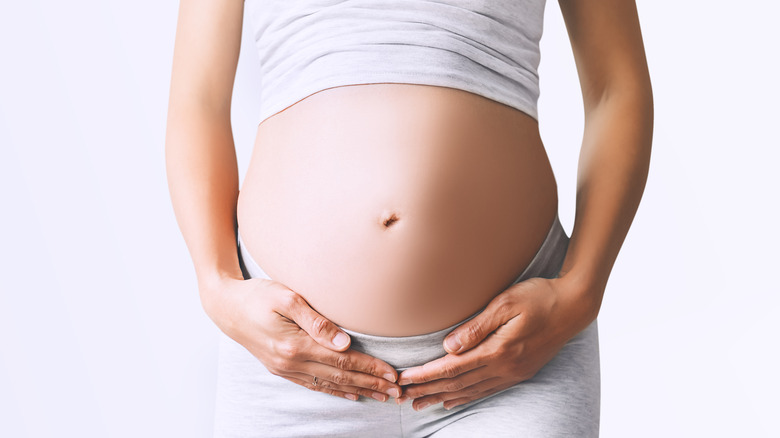How Common Is Pica?
Pica is a complex eating disorder or pattern in which people crave and compulsively eat substances with no nutritional value, according to WebMD. Some of the most common forms of pica are the consumption of starch, clay or soil, or large quantities of ice (via Nursing Open). However, people with pica have reported eating all sorts of things like metal, soap, chalk, hair, laundry detergent, firecrackers, burnt matches, and more.
The term pica comes from the medieval Latin word for magpie — a bird that supposedly collects and eats almost anything (per Nursing Open). For some people, the disorder might be harmless, especially if it's short-term. But depending on what's being ingested, it can also cause a host of different problems and complications. Some individuals have been known to suffer from choking, poisoning, blocked intestines, and parasitic infections. And at the very worst, pica can lead to death (via The American Journal of Forensic Medicine and Pathology).
The causes of pica
In some cultures, pica is not seen as a pathological problem (via Psychiatric Times). For example, eating clay is socially accepted in the Transkei region of South Africa (via African Health Sciences). Studies have shown that pica rates are higher in developing countries where there are more cases of anemia and people are more likely to suffer from food scarcity (via International Journal of Gynecology and Obstetrics). Needless to say, no direct cause of pica has yet been established and it is far more common in pregnant women and children.
Pregnant women who experience pica report seeking out certain objects for their smell, taste, or texture, while others want to alleviate their nausea or satisfy their hunger pangs, according to Nursing Open. Some researchers believe that pica in pregnant women is likely to stem from anemia, since low levels of iron can set off peculiar cravings (via Rochester Institute of Technology). Some women even consider these substances to be nutritionally beneficial, even though clay can cause severe constipation and make anemia worse in the long run.
Children may display pica if they've experienced trauma, neglect, or other psychological stressors (per Psychiatric Times). Neurodevelopment conditions, like Autism Spectrum Disorder, can also be a risk factor (via Centers for Disease Control and Prevention).
How common is it really?
A 2016 study from the International Journal of Gynecology and Obstetrics found through a global meta-analysis that 27.8% of moms-to-be reported pica-like symptoms at some point during their pregnancy. In certain parts of Africa, like Ghana, up to 47% of pregnant women report eating non-food items, particularly ice and clay (per Nursing Open). However, based on data from a U.S. residential clinic, pica was rare and only seen in 1.3% of women seeking treatment for eating disorders (via International Journal of Eating Disorders). Health experts have noted that the disorder has seen a rise in the U.K. over the past couple of years (per ITV News).
In order for a diagnosis of pica to be made, symptoms must be occurring for at least a month, according to Nursing Open. A person who eats certain non-food substances as part of their religious or cultural practices wouldn't meet the diagnostic criteria. An infant or toddler typically wouldn't receive a diagnosis either, since putting random objects into their mouths is a natural part of their development (per Journal of International Society of Preventive & Community Dentistry).
If you are struggling with an eating disorder, or know someone who is, help is available. Visit the National Eating Disorders Association website or contact NEDA's Live Helpline at 1-800-931-2237. You can also receive 24/7 Crisis Support via text (send NEDA to 741-741).



